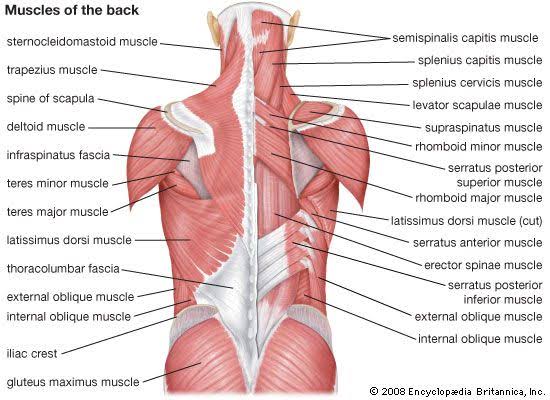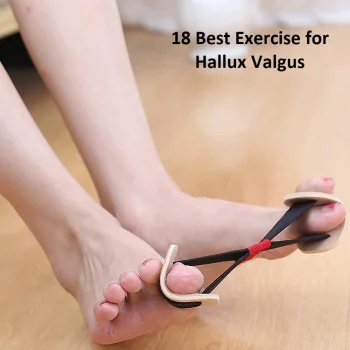Hamstring muscle exercises
Table of Contents
What is the hamstring muscle exercise?
- Hamstring exercises are used to strengthen the hamstrings, the muscle group situated on the back of the thigh. Tight hamstrings can cause pain in the lower back, knees & even the lower abdominal part. Hamstring exercises can be performed to increase flexibility, build strength & improve athletic performance.
- The hamstring muscle is a larger group of muscles in the lower body.
- These 3 muscles are involved biceps femoris, semitendinosus & semimembranosus.
- It is located in the back of the thigh in the leg.
- A hamstring muscle is commonly called as opposite group muscle of quadriceps femoris but it does not mean that both muscles not working together.
- Both group muscles work together when you are in a standing posture the knee & hip both are extended.
- All hamstring muscle was used in daily activities like running. biking, walking, as it does knee flexion & hip extension control.
- The benefits of hamstring muscle exercise help to strengthen the back thigh & power of muscle & its tone.
- It mostly focuses on mobility as well as strength.
- A Stronger hamstring group muscles can help to athlete compete more effectively than others.
- This muscle is involved in many sports activities.
- Which helps to increase stamina & speed in sports activities.
- This muscle function is hip extension & knee flexion.
- You have to take care of the hamstring muscle while doing heavy activities.
- When the hamstring is injured you firstly feel pain in the back of the knee.
- A hamstring injury causes sharp shooting pain in the back thigh.
- You feel a popping of muscle. hamstring injury is mostly seen in sportsmen & in a dancer due to sudden stop & start the activities.
- When you suffer from a hamstring injury you have to sleep with your knee straight.
- For preventing this injury you have to strengthen & more flexible the hamstring muscle.
- The action of the hamstring muscle is a hip extension and knee flexion.. it is important to keep these muscles loose or flexible. hamstring Stretch will help you to avoid strains & muscle tears.
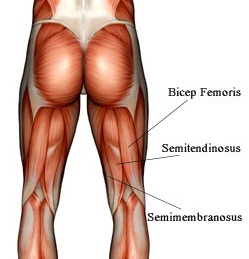
What are Hamstring muscles?
- Hamstring muscles are part of the skeletal muscles.
- These muscles are voluntary means a person controls the muscle move & work.
- The human body has three hamstring muscles that lie at the back of the thigh.
- These muscles are used to walk, climb stairs, squatting & perform many other leg movements.
- The function of these hamstring muscles is to flex the knee, extend the thigh at the hip joint & rotate the lower leg from side to side when the knee joint is bent.
- In the hamstrings muscle three muscles are included:
- Biceps femoris = This muscle is closest to the outside of the body.
- Semimembranosus,= This muscle is closest to the middle of the body.
- Semitendinosus= This muscle is between the semimembranous & the biceps femoris.
Health benefit of Hamstring exercise.
Following are the Benefits of a Hamstring exercise
- Strengthen the back thigh which will improve the knee flexion & hip extension.
- Reduced chance of injury: Keeping the hamstrings flexible will reduce the likelihood of straining or tearing the muscle fibers during heavy physical activities, such as running.
- Assist to improve stamina & speed in athletes.
- Improve flexibility: Hamstring muscle stretching helps to improve flexibility & increase the range of movement in the hip joint & knee joint. Both of these benefits will help people fulfill daily tasks, such as walking up stairs climbing & bending forward, with ease.
- Improve or maintain the posture
- Help to relieve back pain: Tight hamstrings decrease the mobility of the pelvis, which creates: pressure on the lower back part. Strengthening & stretching the hamstrings can prevent them from becoming too tight & give extra support for the back & pelvis.
- Help increase blood circulation.
- Reduce muscle fatigue, as well as help, reduce the risk of injury.
- It helps improve the balance as well as increase stamina.
- help stop the onset of delayed muscle soreness.
- Decrease the risk of sciatica Pain
- Tingling & numbness sensation in the posterior thigh.
- Strong hamstrings help you to move efficiently & quickly, and easily.
- It helps prevent injuries because the hamstrings stabilize the knee joint & hip joint.
Stage 4 program of hamstring muscle exercises after tendinopathy & more condition.
Stage 1: Isometric hamstring load
- Isometric exercises in positions without tendon compression are proposed as an effective method of loading the muscle-tendon unit as well as reducing pain in proximal hamstring tendinopathy with irritable symptoms. It has been announced that isometric exercises have a pain inhibitory response. It is recommended that isometric exercises might be repeated several times per day.
- Symptom severity & irritability are used to determine the dosage. The dosage can be adjusted to shorter or less intense contractions or vice versa based on the symptoms. In the early stages of proximal hamstring tendinopathy, the position of the hip might be near neutral hip flexion-extension or in minimal hip flexion (20°- 30° for straight leg pulldowns). A sign of isometric hamstring loading is an immediate reduction in pain with hamstring loading tests after exercise.
- Appropriate exercises for stage I rehabilitation
- Isometric leg curl
- Bridge holds – hip in neutral
- Isometric straight leg pulldowns
- Trunk extensions
- Isometric long leg bridging on two, progressing to one leg holds
Stage 2: Isotonic hamstring load with the minimal hip flexion
Important aspects of proximal hamstring tendinopathy rehabilitation are:
- to restore hamstring strength
- to restore hamstring muscle bulk & capacity in a functional range of motion
- Isotonic hamstring loading may begin when there is minimal or no pain (VAS 0 -3 out of 10) during hamstring loading in the early ranges of hip flexion. Although eccentric exercises are widely accepted as the treatment of choice for tendinopathies, there is not enough evidence for isolating the eccentric component. Heavy slow resistance training adds eccentric & concentric elements. It has also been shown to compare with isolated eccentric loading in tendinopathy rehabilitation.
- With Heavy Slow Resistance, the aim is to perform a slow fatiguing resisted isotonic exercise. Start with 15 RM (the maximum load that can be lifted 15 times in a single set) and progress to 8 RM. Perform 3-4 sets every second or other days Hold contractions for 3 seconds for each phase of the exercise (concentric and eccentric).
- Minimize loaded hip flexion in the early stages. This is advised to preserve the enthesis against too much compression. It is main to concentrate on single-leg work to address asymmetrical strength loss. Continue with the stage 1 isometric exercises on the “off” days. This will help with symptoms (pain), especially if there are still symptoms present.
- Appropriate exercise for stage 2
- Single leg bridge
- prone hip extension
- prone leg curl
- Nordic hamstring exercise
- Bridging progressions
- Supine leg curl
Stage 3: Isotonic exercises in increased hip flexion (70° to 90°)
The aim of rehabilitation in this stage are:
- to continue with the hamstring muscle strengthening in more hip flexion
- to continue with muscle hypertrophy in more hip flexion
- to continue with functional training in more hip flexion
- Once there is minimal pain or no pain (VAS 0 – 3 out of 10) with higher loading hip flexion tests such as lunging & arabesques, isotonic strengthening in increased hip flexion can be implemented. The dosage & frequency of exercises remains the same as in stage 2. The technique is important & exercises might be performed slowly & controlled. The progression into greater hip flexion often causes pain & irritability & is important to monitor the 24-hour response post-exercise with loading tests into hip flexion (hamstring bridge, deadlift, single-leg arabesque).
- Appropriate exercises for stage 3
- slow hip thrusts
- forward step-ups
- walking lunges
- deadlifts
- Romanian deadlifts
- At the end of phase 3, patients with proximal hamstring tendinopathy should be able to load the proximal hamstring comfortably through sport-specific ranges with little aggravation of symptoms.
Stage 4: Energy storage loading
- This stage is only necessary for patients & athletes returning to sports that involve lower limb energy storage or impact loading. The introduction of power or elastic stimulus for the myotendinous unit can start when there is minimal pain during load tests (VAS 0-3out of 10. It is also essential to have adequate bilateral strength in single-leg exercises from stages 2 & 3. Good movement control is also needed. In the early phase of stage 4, it is advised to limit the amount of hip flexion, to preserve the proximal hamstring and the tendon from compression. Note that this is the most provocative stage in the rehabilitation process & a conservative approach is needed for the dosage & frequency of the exercises prescribed. Start with performing exercises only every 3rd day. Follow with a stage 1 day, to settle the tendon. The following day will then include strengthening exercises from stages 2-3. This adds up to a 3- day high, low, & medium tendon load cycle, twice a week, with a rest day between cycles.
- Appropriate exercise for stage 4
- Sprinter leg curl
- A-skips
- Fast sled push or pull
- Alternate leg split squats
- Bounding
- Stair or hill bounding
- Kettlebell swings
- Lateral, rotational cutting movements
What are the hamstring muscle stretch exercises?
- A hamstring is a group of 3 muscles that cover the back of the thigh. These muscles are the semimembranosus, semitendinosus, & biceps femoris, which cover hip & knee joints.
- Sports that include a lot of sprinting or stop-& -start motion, like soccer & tennis, may create tightness in the hamstrings. like dancing & running.
- Keeping these muscles loose is effective. Tight hamstrings are responsible for strain & tearing. There’s also a separation between injury & tightness. If you feel pain in the hamstring, it’s good to see a doctor before trying to treat the injury at home.
- There are so many stretches that you can perform to help keep the hamstrings loose. It’s the best idea to warm up the muscles before stretching. Try to walk or perform some other activity so the muscles are warm.
- People might goal to stretch the muscles in their body, including the hamstrings, regularly. Even some minutes of daily stretching can increase a person’s overall mobility.
- If someone feels lasting tightness in their hamstrings, they might consider speaking to their physiotherapist. constant tightness in the
- hamstrings muscle may indicate that the muscles are over-lengthened.
What are the advantages of hamstring stretches?
Hamstring stretches can maintain the hamstrings loose & flexible. Flexible hamstrings have more advantages, such as:
- Avoiding lower back pain – Tight hamstrings lower the mobility of the pelvis, which can give pressure on the lower back. Strengthening & stretching the hamstrings can avoid them from becoming too tight & give extra support to the back & pelvis.
- Decreasing injuries – Maintaining the hamstrings lose will reduce the chance of straining or tearing the muscle fibers during strenuous physical activities, such as jogging, and running.
- Improving flexibility – Hamstring stretches can improve flexibility & increase the ROM in the hip. Both of these advantages will help people perform daily activities, such as bending over, with ease & walking upstairs.
- Improving posture – When the hamstrings are tight, the muscles rotate the pelvis backward. This can clash with the natural arch in the back, which can cause wrong seated & standing posture. Maintaining the hamstrings loose can help people stand taller & sit straighter.
- It increases the mobility of the hip & knee joints. such as increasing the Range of movement of knee flexion & hip extension.
- It maintains optimal athletic performance.
- Stretching the hamstring muscle after an athletic performance can help reduce delayed-onset muscle soreness (DOMS) in these muscles.
What are the common mistakes to Avoid during hams stretch?
There are some mistakes you should not done during stretch :
Bending the knees: If you want perfect hamstring stretch while sitting, try to keep the legs extended. If your hams are tight, so you need to bend the knees, simply do not stretch forwards as much. that increasing hamstring flexibility takes time.
Hunching over the shoulders: Try to hinge at the hips level, rather than hunching over from the shoulders. Imagine reaching ‘up and over the legs & trying to keep the spine in a normal position. It is good to have a neutral spine & not move as far forwards as to hunch over just to touch the toes.
Stretching exercise of hamstring muscle

- Hamstring muscle stretch:
- Sit on the ground with both legs out straight.
- Extend the arms & reach forward by bending at the waist as far as possible while keeping the knees straight.
- Hold this position for 15-30 seconds.
- Relax back into the starting position.
- Repeat three times.
- Be sure to stretch until a moderate pull is felt in the back of the thighs. If you feel any excessive pain, you might stop the exercise.

2. Hurdler hamstring muscle stretch:
- Sit on the ground with one leg out straight.
- Bend the other leg at the knee & position the sole of that foot against the opposite inner thigh.
- Extend the arms & reach forward over the one straight leg by bending at the waist as far as possible.
- Hold this position for 15 seconds.
- Relax and then Repeat with the other leg.
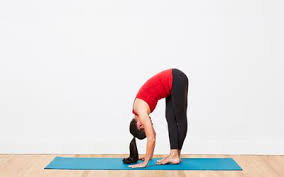
3. Standing hamstring muscle stretch( Both legs are together):
This hamstring stretch is a simple one to do anywhere at all. It is done in the standing position & stretches both legs at once. Here is how you to do the standing hamstring stretch:
- Stand & cross the right foot in front of the left.
- Slowly lower the forehead to the right knee joint by bending at the waist.
- Keep both knees straight.
- Hold this position for 15-30 seconds.
- Relax and then Repeat for the other side by crossing the left foot in front of the right.
4. Standing hamstring muscle stretch (one leg at a time)
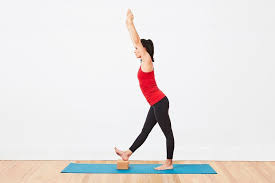
The one-legged standing hamstring stretch is completely possible and the easiest hamstring stretch to do. It can be done anywhere home, office, or outdoors & it requires no special tools.
- Stand up straight with one heel resting on a small stool. if it is outside, one can use the curb, but be sure to watch for cars.
- Keep the knee straight.
- Reach both arms up toward the place where the wall & ceiling meet. If outside where there is no wall and ceiling, when simply reach up into the air so that the arms are about even with the ears. Reaching the arms up and as opposed to reaching down toward the foot, will keep the back straight.
- Keep the back straight & One should be bending forward slightly from the hips.
- Reach the forward & feel a stretch in the hamstring behind the thigh.
- Hold this position for 15-30 seconds, & repeat 3 times.
5. Runner’s hamstring stretch
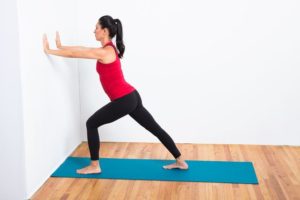
The runner’s stretch is a common flexibility exercise for hamstrings
- Stand one foot from a wall & place the hands on the wall at shoulder height, shoulder width apart.
- Take a step back with 1 leg while pushing into the wall
- Keep the back straight & press the heels into the floor.
- Hold for 15-30 seconds.
- Step forward and repeat with the other leg.
- Repeat the exercise 3 times on each side.
6. Stretching
- The position of the patient is side-lying & support is provided to the lower leg with the hip & knee flexed
- Hold the upper leg & bring it into abduction
- During abduction, try to support the leg against your body, so that the patient can extend the knee whilst pressing the hip into flexion
- With one hand, hold the upper leg & with the thenar of your other hand try to provide stretch to the muscle away from the site of insertion
Quadriceps foam rolling:
- The foam rolling to the quadriceps alone is effective in decreasing the activation of the biceps femoris muscle. Foam rolling on patients’ muscles can lead to alteration in range of motion, performance & muscular co-activation around the particular joint. According to the researcher, when there is a simultaneous contraction of the agonist and antagonist muscles, it helps in providing stability to the knee joint. However, if any disturbance occurs to the stability of the joint, the knee particularly goes for injury.
- Furthermore, the study portrays ACL injury, which is more common due to alteration in muscular co-activation, & further research is required to identify the efficacy of foam rolling on the activation of muscle around the knee joint.
What is the hamstring muscle strengthening exercise?
- Strengthening exercises should be done to gradually & progressively increase the load through the tendon. This is important to prevent injury from recurring. Simply going straight back to normal training levels as soon as are free of pain is not a good idea.
- Strengthening exercises can start as soon as they can be done without pain. This may be after the first 48 hours or it may be up to a week prior to strengthening can begin.
- There might be a gradual progression. Once you can cope with the easy exercises without pain during, after, or the following day, then move on to a more difficult exercise.
- Strengthening exercises should continue long after feeling the injury has recovered
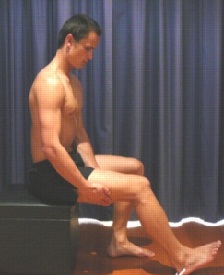
- Static Hamstring contraction
- Start this exercise by sitting with the knee bent to about 45 degrees.
- Press the heel into the ground tightening the back of the thigh.
- Hold for 5 seconds & repeat 10 times as hard as possible pain-free.
2. Bridging exercise

- Start this exercise lying on the back in the supine position.
- Gradually, lift the bottom pushing through the feet, until the knees, hips & shoulders are in a straight line.
- Tighten the back of the thigh while performing this exercise.
- Hold for 3-5 seconds then slowly lower the bottom of the back down.
- Perform this exercise 3 sets of 10 repetitions provided the exercise is pain-free.
3. Single leg bridging

- Lie flat on the back with the knees bent & feet flat on the floor. The feet & knees might be hip distance apart.
- Tighten the abdominal muscles slightly to engage the core and stabilize the lower back.
- Lift up into a simple bridge position but as one holds the bridge position, lift 1 foot off the floor & extend the knee as shown.
- Hold for 3-5 seconds, bring the foot back down, & then lower the buttocks to the floor.

4. Hamstring curls with gym ball:
- Lies on the back with the feet & lower calves resting on a gym ball with knees straight & arms crossed over the chest.
- Slowly curl the ball towards the body by bending the knees & then slowly roll the ball away
- Repeat this exercise 10 times.
5. Pistol Squat (With Optional Plyo)

- Stand holding your arms straight out in front of your body.
- Raise your right leg off the floor in front of you.
- Keeping your right leg straight, push your hips back and lower your body as far as you can without breaking form.
- As you do this, raise your right leg so that it doesn’t touch the floor, and keep your torso as upright as possible. Pause, then push your body back to the starting position.
- Do equal reps for each leg. For a bigger challenge, as you rise out of the squat, add in a jump-off of your planted leg.

6. Split Jumps (With Or Without Dumbbells) :
- Stand in a staggered stance, your right foot in front of your left.
- Lower your body as far as you can.
- Quickly switch directions and jump with enough force to propel both feet off the floor.
- While in the air, scissor-kick your legs so you land with the opposite leg forward. Repeat, alternating back and forth with each repetition.
7. Glutes Roll
- Sit on a foam roller with it positioned on the back of your right thigh, just below your glutes.
- Cross your right leg over the front of your left thigh.
- Put your hands flat on the floor for support.
- Roll your body forward until the roller reaches your lower back.
- Then roll back and forth. Repeat with the roller under your left thigh.
There has some yoga to Strengthen the hamstring muscle :
Here are 5 of my favorite exercises for Strengthen the hamstrings muscle
- Chair-pose

- You have to stand with your hip & feet distance apart.
- Then you have to bend both knees until the thigh is parallel to the ground & you have to imagine sitting on a chair.
- the spine might be straight keep the body weight on heels.
- Place both hands in prayer position at chest level or raise over the head maintain this for 5-10 seconds.
- Then take down the hand you have to stand up.
2. Crescent-knee-lifts

- For this pose, you have to simply stand and then take the right foot backward approx 3 feet.
- You have to stay on the right toes and reach through the heels to activate the leg.
- Bend the left knee, and bring it up to 90 degrees.
- You may take the hands in prayer position at chest level or you take the arm over the head.
- From this position you have to take the right foot up & down, then breathe out. hold this position for 3-4 seconds.
- Now take the left leg backward & do this movement again. repeat 5-10 times on each side.

3. Triangle Pose
- Set you the same as in Crescent pose.
- Place the left foot flat on the ground, pointing the toes towards the upper left corner of the mat.
- Turn the trunk to face the left side wall.
- You have to Stretch both arms towards the front & back walls.
- The head turns to face the front of the mat.
- Straighten the right leg, & breath in & reach as far as you can move forward with the right hand.
- Once you can go no further reach, then breathe out to bring the hand down towards your mat, bending at the waist.
- Reach the left hand towards the ceiling & look upward at the fingers.
- You also even elevate the arms over the head, using even more core & leg strength.
4. Warrior III

- It is also called Virabhadrasana III
- You have to first take a Crescent Pose
- Breathe out & bend the right knee & on the breath in push through the foot to rise up on the straight left leg.
- Flexed the right foot & push through it as if you are standing on the wall just behind you.
- You can also keep both arms outstretched towards the wall in front of you or bring them to into a prayer position. hold this position for 5 – 6 seconds.
- If you would like to do combining the Warrior III pose & Crescent Knee Lifts breathe in Warrior III pose then breathe in float back down into a crescent pose, breathe out & touch the knee to the floor, and breathe in back into the warrior all pose.
5. Bow Pose

- For this, you have to lie on your stomach. your hip and feet distance apart
- Keeping the feet hips distance apart, bend at the knees & reach back to grab the tops of your feet with your hands.
- With an inhale, push the feet into the hands to pull yourself up.
- Resume pushing with the feet, while pulling with the hands. Hold this position for 3-5 seconds.
- Protect the back by activating the core, and hugging the belly button to the spine.
- So, while you may have the aim of touching the nose to the knee, be sure to keep in mind the concept of balancing the body by including hamstring strengthening exercises along with the stretches.do not overstretch the body to conform to an idealized standard to complete the pose.
- By including the above simple exercises in the weekly fitness program you can improve your hamstring strength & keep these vital muscles in the body which is happy & healthy.
- Remember, we are always looking to maintain balance in yoga poses. It is important that we are stronger & flexible to keep our bodies perfectly supported on & off yoga mats.
When you should not do hamstring strengthening exercises?
- If they have felt pain during the exercise.
- If you have recently undergone any surgery.
- If you have a balance issue.
- Recent knee injury.
- Recent hip injury.
- If you feel the hamstring muscle is overstretched.
- if the doctor advised taking rest
What precautions should take during exercises.?
- Always ensure you follow a correct warm-up prior to rain or competition.
- Stretch the hamstring muscles both before & after training. Stretch every day, regardless of whether you are training or not.
- Strengthen the muscles to cope with the demands placed on them. In particular eccentric strengthening is important.
- Have regular sports massage to keep the muscles & tendons in good condition.
- Avoid doing too many accelerating/decelerating runs or hill work.
FAQ
If you really want to focus on short-term hamstring growth, you can train the hammies more than once per week for 6-8 weeks. If you choose this approach, do not simply repeat the same workout you did the first time.
Cycling helps to strengthen & loosen the hamstrings, which lift the pedal up with each cycl& stabilize the joints. Lower legs. You’ll work the calves with each cycle, which helps to protect your ankles and feet while cycling and during everyday activities.
Best Hamstring Exercises are:
Barbell Good Morning.
Eccentric Hip Extension Hamstring Curl With Sliders.
Kettlebell Swing.
Glute-Hamstring Raise.
Yes, squats do instruct the hamstring muscles, but not to a significant degree. During squats, the primary hamstring muscles used are the quads, glutes, & hip adductors. The hamstring muscle only recruits near the top of the squat to assist the hips from extending up & forward
Running, walking, cycling, & hiking are just some activities that recruit the hamstring muscles on the thigh’s back. During movement, the hamstrings flex the knee & extend the hip.


